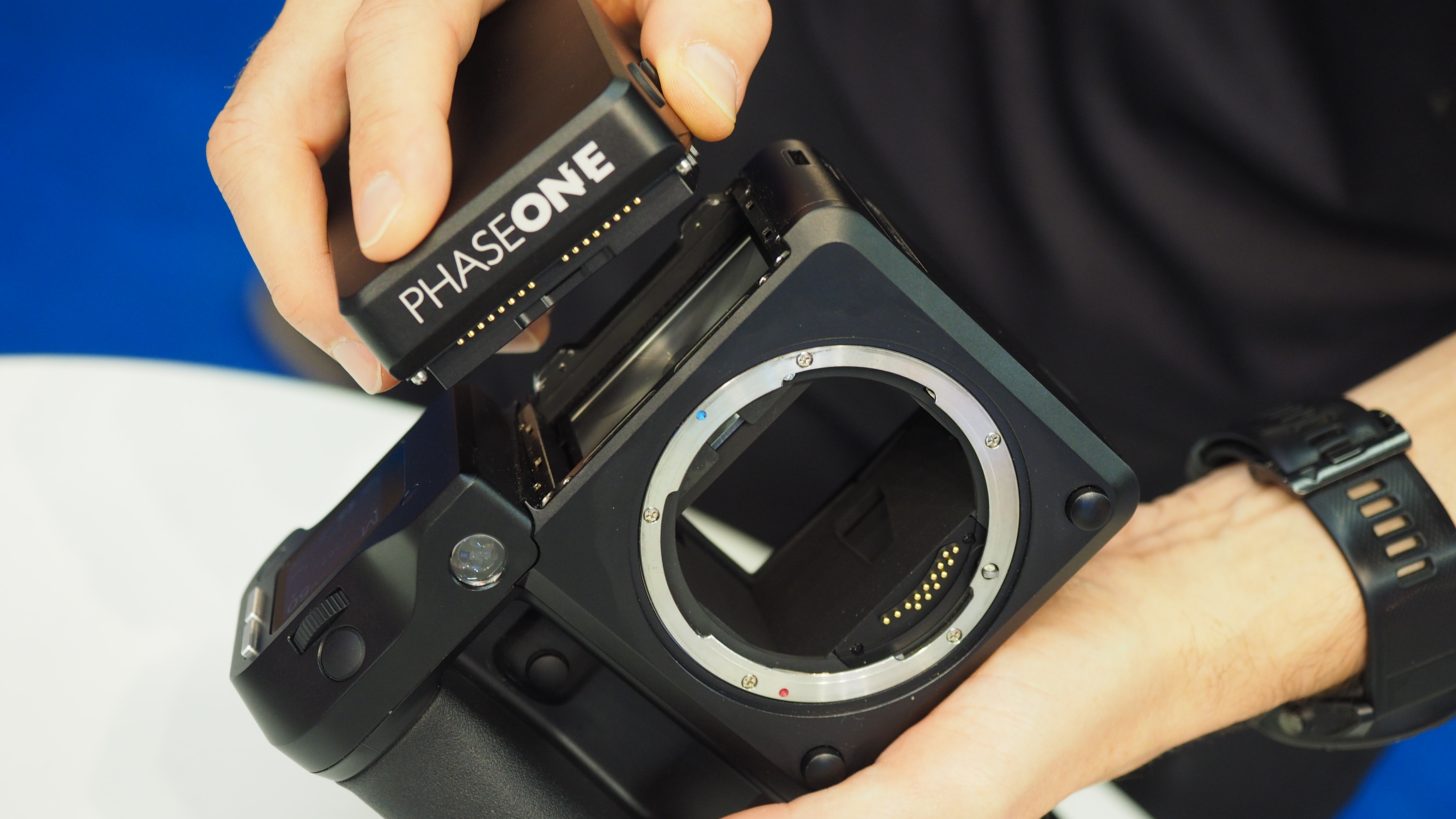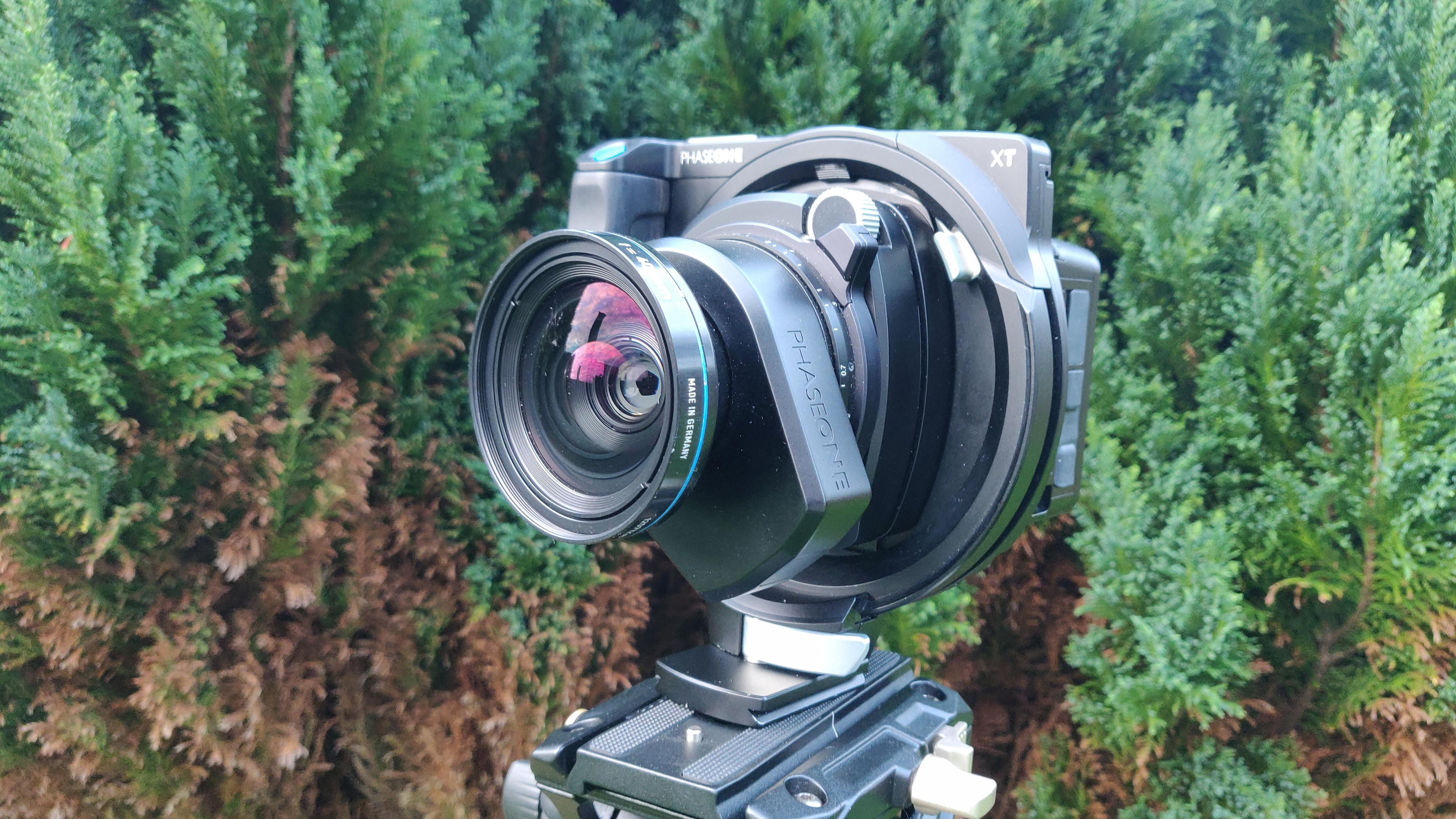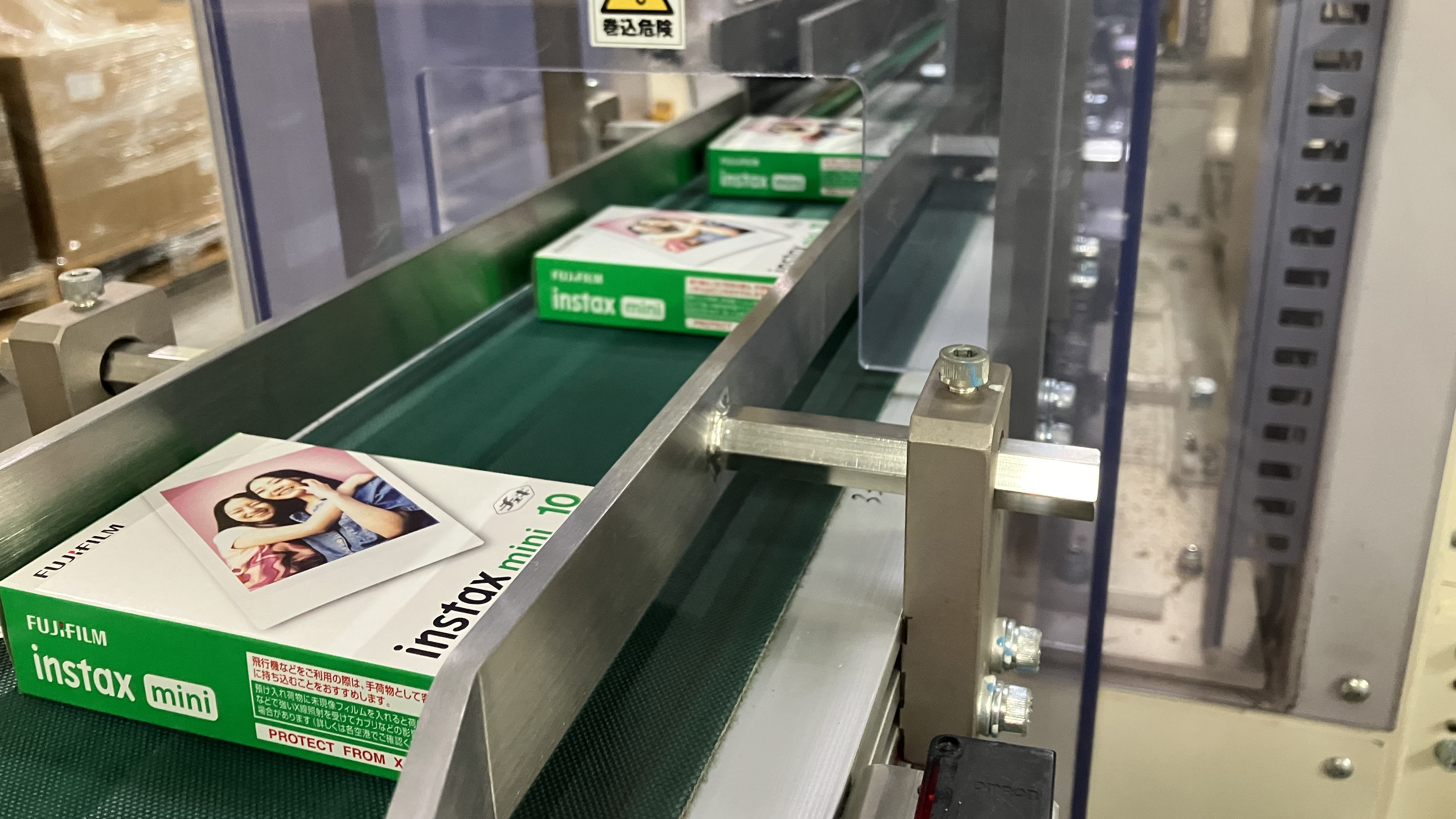The highest resolution cameras you can buy today: ultimate megapixel monsters
These are the highest resolution cameras available today, hitting megapixel counts as high as 400MP!

The highest resolution cameras give you all the pixels you can handle. Producing staggeringly detailed images, these are cameras for producing massive prints, for shooting imagery for billboard ads. These are, for the most part, professional tools, and they do not come cheap.
Many high-res cameras are also not practical for most forms of shooting, designed to be used in controlled studio environments. With that said newer medium format cameras like the compact Fujifilm GFX100RF have changed the game, and are much more light on their feet.
So, which to pick? My personal favorite is the Hasselblad X2D II 100C for pure photography, as it simply has the best color rendition and "3D pop" I've ever seen in a camera. With that said, I acknowledge that the more affordable and versatile Fujifilm GFX 100S II is going to be a better choice for most people. I'll also point to the Canon EOS R5 (which I bought myself), firstly because it can shoot 400MP photos and secondly because it offers fantastic 8K video with killer autofocus and rock-solid image stabilization. But here's what else is on offer…

I've been obsessed with resolution ever since first handling a Hasselblad 500C in the film days. I'm in love with what Fujifilm and Hasselblad have been doing with the medium format GFX and X systems, respectively, not to mention what Sony, Sigma, Leica and Canon have been able to achieve with 35mm sensors.
The Quick List

With its native 102MP resolution and 400MP pixel-shift, the GFX 100S II sure packs the pixels – and it also boasts improved autofocus and stabilization. More affordable than the GFX 100 II, but offering the same resolution, it's the best choice for most.
Read more

Hasselblad cameras have the best color science my eyes have ever seen, rendering dimension and form that's unmatched. On top of that, it's a damned fine conventional mirrorless camera with record-breaking stabilization – but no video capability.
Read more
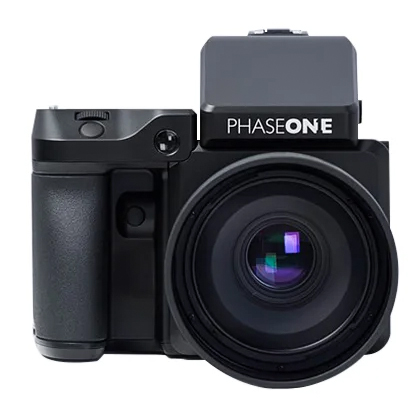
Packing 151MP on a full size medium format sensor (unlike the smaller GFX and 100C sensors), this is a true medium format monolith. It's one of the coolest cameras I've ever used, but at the price of a sports car it's definitely a pro tool! It's also not something you're going to be using outside of the studio.
Read more

The most agile, lightweight camera you can buy with a monster resolution, the 102MP Fujifilm GFX100RF is an impressive feat of engineering, and produces gorgeous images to boot. High-res street photography? Look no further – this is the camera to do it.

I know, it's only a 45MP full frame camera. But the R5 can shoot 400MP images via pixel shift, and it also offers the best 8K video performance of any camera on this list – along with the best autofocus system and best image stabilization.
Read more

Where the IQ4 is definitely a camera I wouldn't take out of the studio, the XT is Phase One's designated field camera. If you want the 151MP horsepower of full fat medium format, but in a more portable form factor, this is the system for you.
Read more
See more products

A combination of the Hasselblad 907X camera / XCD lens mount and the CFV 100C digital back that's the brains of the system, this truly modular medium format camera offers an amazing degree of versatility, with the option to attach all kinds of accessories.

The top resolution you can get from a full-frame mirrorless camera, the Sony A7R V sports a native 61MP sensor, which can be bumped up to 240MP via pixel-shift technology for truly detail-filled images. The Sony E lens mount also boasts plenty of pin-sharp lenses.

With clever crop modes that make use of its high-res 60.3MP sensor, the Leica Q3 43 is a versatile choice for street photography and getting that inimitable Leica 'look', providing a narrower perspective than the 28mm Leica Q3.
The highest resolution cameras right now
Why you can trust Digital Camera World
Here's my list of the highest resolution cameras on the market, including both native resolution (as in, the number of pixels on a sensor) and resolution achieved via pixel shift multi-shot (whereby the camera micro-moves the image sensor and create an artificially larger sensor area – which is only suitable for static scenes with no movement).
This comprises some of the best medium format cameras as well as full frame mirrorless cameras, each of which has their own pros and cons. This guide is focused on resolution, so make sure to research each format to be sure which is right for you!
Best overall
Specifications
Reasons to buy
Reasons to avoid
The GFX 100S II is one of the most affordable high-resolution medium format cameras on the market right now. While a starting price tag of $4,999 might not seem exactly cheap, as you'll see, it's considerably below many of the other high-res cameras on this list. It's got the same top-line 102MP resolution as its stablemate, the flagship professional Fujifilm GFX 100 II, but the considerably lower price tag of the 'S' version means it's likely going to be the best pick for most users.
What really continues to impress me about Fujifilm's GFX medium format cameras is how much they offer in addition to their stunning high-resolution sensors. The stabilization in the GFX 100S II provides up to eight stops of effective compensation, and the snappy autofocus system is pretty much on par with the X-series mirrorless cameras.
There are a few features stripped back from the GFX 100S II compared to the GFX 100 II, which if they're deal-breakers for you will mean you'll need to opt for the more expensive camera. You don't get 8K video on the GFX 100S II, having instead to make do with 4K 30p – though to be honest, the GFX series wouldn't be my first choice for video anyway. Elsewhere, you're also making do with a slightly slower burst rate and a lower-res viewfinder. The smaller body of the GFX100S II is a feature that some users may prefer, though it does sometimes make for some awkward balancing with medium format lenses.
Of course, whichever way you go, you're still getting stunning 102MP files, with deep rich colors and absolutely ridiculous detail – and if that's not enough, you can make use of the pixel-shift mode to produce ridiculous 400MP files. For all-purpose usage and maximum resolution, it doesn't get better than this.
Read our full Fujifilm GFX 100S II review
Best colors
Specifications
Reasons to buy
Reasons to avoid
Having the best resolution is all well and good, but when you've got all those pixels you also want them to have the best possible color rendition. And as good as Fujifilm colors are, Hasselblad has the best color science in the business. The best way I can describe its Natural Color Solution technology is "HDR for colors", or the difference between a 4K movie and a DVD.
The Hasselblad X2D II 100C is one of the best cameras I've ever used, and a strong competitor for being the best stills camera ever made. While I acknowledge that the sublime and more affordable GFX 100S II is probably going to be the better choice for most users, hence its place at the top of this list – my heart belongs to the X2D II 100C.
As well as that top-tier 100MP resolution, you also get 15.3 stops of dynamic, and a new industry record in the form of a 10-stop stabilization system. The handling is also much improved compared to the previous X2D, with the introduction of a physical joystick and a customizable button beneath it, as well as a tilting rear screen that now extends outward so that it is no longer blocked by the viewfinder when used from the top down. I was blown away by the beautiful ergonomics of this camera – I'd go so far as to call its handling perfect.
This is also the first Hasselblad camera to introduce continuous autofocus (about time!) with subject recognition and LiDAR autofocus. It's no sports camera, but it's pretty darn effective. The fact that it has a built-in 1TB SSD also means that you're covered if you forget a memory card. This is such a fully featured camera, and all those features come at a cost significantly greater than the GFX 100S II. But this camera really is something special.
Read my full Hasselblad X2D 100C review
Highest native resolution
Specifications
Reasons to buy
Reasons to avoid
The first time I used the Phase One, I was blown away not only by the raw resolution (a mind-boggling 151MP) but also the sheer scope of the images. That's because this camera features a "full frame medium format" sensor measuring 53.4 x 40mm, as opposed to the "cropped medium format" 43.9 x 32.9mm sensor used by Fujifilm GFX and Hasselblad X series cameras.
Not only does this create even shallower depth of field (and further shorten the effective focal length of lenses), it also means that the amount of detail in image files is truly unparalleled. I was genuinely amazed at the quality presented by megapixels that were so much larger and more numerous.
This raw power comes with provisos, though. Firstly, this hulking system is strictly for the studio – unlike the GFX 100 and X2D, this isn't ever going to be a street photography camera. Secondly, it's strictly for professional work, with a price tag starting at $50,000.
The XF 1Q4 system is so exclusive that you can't just go on Amazon and buy one – you have to go through Phase One's specialist dealer network. But if you need the ultimate in sheer imaging performance, you'll find no better.
Read our full Phase One XF IQ4 150MP review
Highest resolution compact
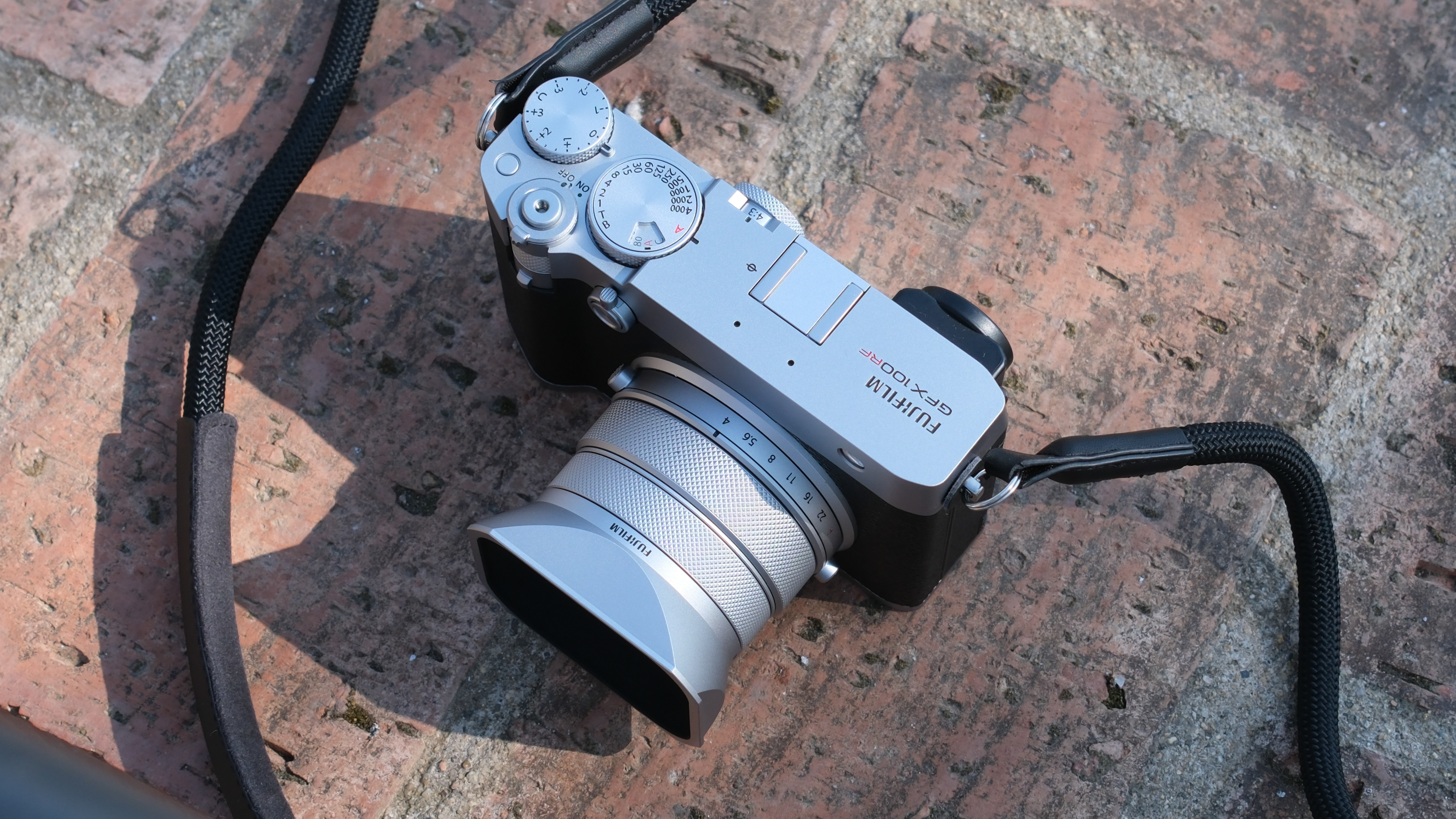
Specifications
Reasons to buy
Reasons to avoid
Not content with shaking up the medium format market with the GFX series, Fujifilm has upped the game by introducing a medium format version of one of its most enduringly popular cameras. The Fujifilm GFX100RF is essentially an X100VI, only with a 102MP medium format sensor instead of APS-C. The fact that it manages to be practically the same size and weight as an X100 camera is nothing short of a marvel of engineering, and if you want to shoot high-resolution imagery while staying light and nimble, this fixed-lens compact is the way to do it.
The high-resolution sensor is paired with a 28mm equivalent fixed lens that's sharp enough to make the most of all those pixels. Naturally, cutbacks have had to be made to make a camera that's so remarkably lightweight for what it's offering – the GFX100RF has no optical viewfinder (though there is an EVF), no in-body stabilisation, and a slightly pedestrian f/4 maximum aperture.
It is still, however, a glorious camera to use, as we discovered in our full review. The level of detail produced by the sensor is simply stunning, and the color output is spectacular, as is always the case with Fujifilm. You get access to all of the fabulous Film Simulation modes, and can ake advantage of the latest intelligent focus tracking modes. Battery life is also hugely impressive – high-res cameras are often very power-hungry, but the GFX100RF kept on shooting for full days, averaging around 500 to 600 shots to a charge in our testing.
While it's not what you'd call cheap, at $4,899 / £4,699 the Fujifilm GFX100RF is one of the least expensive cameras on this list, especially when you consider that you don't have to factor in the cost of lenses. One of the most impressive compact cameras ever made – this high-res powerhouse makes monster-pixel photography more accessible than ever.
Best 8K video
Specifications
Reasons to buy
Reasons to avoid
What's a 45MP full frame camera doing this far up the list, among the 100MP medium format monsters? I'll tell you what: beating them in the video stakes and the resolution stakes, thanks to its 400MP pixel shift photos!
If you want a high-resolution camera for video, the R5 is your answer. Its 8K 30p and 4K HQ video is crystal clear and utterly stunning, and is powered by Canon's Dual Pixel AF II autofocus system that (for my money) is the best in the game. Best of all, thanks to the frame grab function, you can shoot 8K video and extract a 35MP still, giving you the best of both worlds.
And yes, while its native resolution is "just" 45MP (still no slouch, let's be honest) it can capture 400MP photographs in its High Res Shot mode – something that's simply unheard of for a 35mm sensor, and is only offered by a few medium format bodies.
The R5 is a camera I personally own, and it's the best overall camera I've ever used. However, it's worth noting that there are recording limits for capturing 8K and 4K HQ video to ensure that the camera doesn't overheat – for pure 8K videography, the Canon EOS R5C might be a better bet.
Canon has also released a direct successor to this camera – the monster Canon EOS R5 Mark II, which features the latest generation of transformative intelligent features, from AI-powered image upscaling to Action Priority autofocus. So why hasn't it been added to this list? Well, the Mark II version eschews the 400MP pixel-shift resolution Hi Res Shot mode in favor of the aforementioned AI upscaling, which tops out at 180MP. So for our purposes in this guide, the original EOS R5 remains undefeated.
Best field camera
Specifications
Reasons to buy
Reasons to avoid
Phase One isn't keen on the XT being called a field camera, but I'm sorry – that's essentially what it is. It takes the power of the IQ4 digital backs and puts them in a form factor that's more compact and portable – to be used in the field, as it were.
Given that it's designed for elite landscape and architectural photography, it marries the IQ4 backs with an integrated lens-shift system that is used to compensate for perspective distortion. Basically it's a camera that makes every optic a shift lens, and the premium Rodenstock lenses each have a large image circle for the convergence correction to work.
Speaking to the nicheness of the system, there are only seven lenses available (though four of them also have a tilt function) and they all carry hefty price tags – on top of the $50,000+ investment in the XT itself.
Like the Phase One IQ4 system, this is the highest of the high end in imaging and isn't intended for 99% of the photographic public – but for those who need it, there's nothing better.
Read our Phase One XT review
Best modular camera
Specifications
Reasons to buy
Reasons to avoid
This is the Hasselblad X2D in a different, and utterly unique, form factor. The 907X is the camera / XCD lens mount, while the CFV 100C is the digital back that contains the brains of the system: the 100MP sensor, tilting screen, integrated SSD and so on.
In short, the X2D is a conventional an all-in-one mirrorless camera, but the 907X / 100C combo is a truly modular medium format camera, which gives it an astonishing amount of versatility. First of all, it's a glorious 500C-inspired box camera in its own right – and I absolutely loved using it in this configuration on a monopod.
However, if you want it to be more handholdable, you can attach a handgrip and viewfinder – and even a hotshoe for a flashgun, if you want to. But you can also remove everything else and use the digital back with other camera systems.
It fits Hasselblad's classic V System cameras perfectly, so you can attach this digital back to something like a 500C and instantly breathe new life into an old body. But you can also mount the back to a technical camera to imbue it with 100MP image quality and Hasselblad's brilliant color science. It's a thing of absolute beauty and a work of utter genius.
See our Hasselblad 907X review
Best full frame resolution
Specifications
Reasons to buy
Reasons to avoid
The highest resolution camera with a full-frame sensor, the A7R V is Sony's pixel-packing specialist with 61MP of power – something that can be muscled up to 240MP via the magic of pixel shift.
It's also an 8K-capable camera, though only in 24/25p with a 1.24x crop (4K 60p is also cropped, but 4K 30p is full readout). Like the GFX 100II I wouldn't pick this first for video, as the EOS R5 is far more capable, but it certainly captures tasty 8K footage and has a superb autofocus system powered by AI subject recognition algorithms.
This is, of course, also fantastic for photography, with Sony's AF being almost as good as Canon's for subjects such as wildlife – and with the respectable 10fps burst mode, this is a surprisingly capable camera for capturing fast action.
I'm a fan of the dual-pivot rear screen, which tilts without having to be flipped out while also offer full flippy functionality if you want it. I wish more cameras had this! The image files are packed with fantastic amounts of detail and dynamic range, though I'm not a fan of Sony's color science (or menu system, for that matter).
I do wish that Sony had opted for CFexpress Type B cards, but instead it has gone for the slower Type A kind – though this does at least enable the A7R V to feature hybrid card slots that also support standard SD memory, so you don't have to invest in new media.
See our full Sony A7R V review
Best for street
Specifications
Reasons to buy
Reasons to avoid
With a 60MP sensor, the full-frame Leica Q3 43 is able to resolve an impressive level of detail in images, and it's much more agile than many of the other cameras on this list. Leica is known for pristine build quality and engineering on the inside and outside of its cameras, and accordingly, the Leica Q3 43 is beautiful camera to look at and use.
The essential combination of this compact camera is a 60.3MP full-frame sensor with a fixed Leica APO-Summicron 43mm lens. This provides a narrower field of view than the 28mm lens on the previous Leica Q3, which for many photographers is just a little wider than is consistently useful. A 43mm focal length is very close to the field of view of the human eye, allowing you to produce images that feel very naturalistic and 'real'.
The controls of the Leica Q3 43 all feel intuitive and well-engineered. There's a shutter speed dial, several customizable function buttons, and a sharp rear screen. The OLED viewfinder is also big and clear. One thing to note though is that the camera lacks a pronounced grip, and this, combined with its not inconsiderable weight, means it can get uncomfortable to hold for long periods. You can, of course, invest in the optional Leica grip, but your wallet will likely already be hurting from buying the Q3 43 in the first place.
Still, the imagery it produces is absolutely stunning. The Summicron lens and Leica's in-camera photo styles all help you nail photos with that inimitable Leica 'look', and the clever digital crop feature helps expand the utility of the fixed lens by essentially turning it into a digital zoom. This is a dream of a camera for street photography at high resolutions, and it's also one of the most affordable 'real' Leica cameras around.
Read our full Leica Q3 43 review
How to choose a high-resolution camera
We have ordered these cameras roughly by the resolution they're capable of producing. Naturally, modes like pixel-shift high-resolution complicate matters, as do varying sensor sizes. However, if your only priority is getting the most pixels possible, you'll want to stay towards the top of this list.
It's worth thinking about the kind of shooting you want to do. If you're going to be in the studio exclusively, shooting subjects that won't move unless you tell them to, the Phase One XF IQ4 and its 150MP full-size medium format sensor are going to be your port of call.
However, modern medium format cameras like the Fujifilm GFX 100S II and the Hasselblad X2D II 100C offer the latest advancements in autofocusing and burst-shooting technology, making them much more useable for different types of photography. This goes even more so for full-frame cameras like the Canon EOS R5, Sony A7R V and Leica Q3 43 – though you'll have to further compromise on resolution.
How we test cameras
We have a two-part testing process. First of all, I evaluate every camera by taking it into the field and shooting in real-world situations. For high-resolution cameras I'm paying particular attention to the level of detail and fidelity in the files – especially when it comes to cameras that feature pixel shift, as the hit-rate and success can vary wildly between manufacturers.
I also consider factors such as video recording and overheating limits, battery life, physical ergonomics and menu grammar, which may not affect performance directly but certainly have a huge impact on a camera's usability. Something I don't do, however, is assign any bias or expectation either way on high-priced cameras; yes, Hasselblads and Leicas and Phase Ones are expensive, but I can only judge how good they are at the job they do – my perception of value may be different to yours.
To complement this hands-on evaluation, my colleague Ben Andrews, our lab manager, performs dedicated lab tests on camera resolution, dynamic range, and noise under scientifically controlled conditions using two key testing tools: Imatest Master and DxO Analyzer:
1. Resolution (ISO-12233): We use a resolution chart based on ISO-12233 from Applied Image inc to indicate the limit of the camera’s vertical resolution at the centre of the frame. The higher the value, the better the detail resolution.
2. Dynamic range (DxO Analyzer): This is a measure of a camera’s ability to capture detail in the highlights and shadows. We use DxO’s transmissive chart, which enables us to test a dynamic range of 13.3 stops.
3. Noise (DxO Analyzer): We use the dynamic range transmissive chart to analyze the signal-to-noise ratio for RAW and JPG files at every sensitivity setting using DxO Analyzer. A higher value means the signal is cleaner.
Read more about how we test and review cameras at Digital Camera World.
FAQs
Is high resolution a good thing for cameras?
High resolutions, like every feature of a camera, have positives and negatives. High-resolution files provide enormous amounts of detail in images. This is great for printing in large formats, and also allows you to crop significantly into an image with no perceptible loss in detail.
However, to be used effectively, a high-resolution requires a comprehensive support system. You need to be using the sharpest lenses you can get hold of, as there's no point in having all those pixels if they're looking through inferior glass. Also, high-resolution files are very large, and will mercilessly gobble up megabytes and gigabytes on your cards and hard drives. This also means you need a pretty capable computer to even open them up in editing software, never mind actually work on them.
If you're equipped to make the most of them, high-resolution cameras will deliver images of simply peerless quality. If you're not, however, all those pixels can feel like a millstone around your neck.
What is the highest camera resolution?
There are specialist scientific and industrial cameras that can boast ridiculous resolution (even some camera film claims 500MP resolution), but the highest resolution commercial camera is the Phase One IQ4 150MP system.
At least in terms of native resolution (the number of pixels on the sensor); if you consider pixel shift multi-shot (where the camera shifts its sensor micro amounts to create a greater effective surface area), the Fujifilm GFX 100S II and Canon EOS R5 can all shoot 400MP images.
Is a 200MP camera phone good?
In my opinion, manufacturers are selling snake oil with 200MP camera phones. Typically these use pixel binning to achieve greater quality on much lower resolution shots (outputting photos as low as 12MP), and make it difficult to unlock a true 200MP shooting option.
Even if you do manage to shoot an actual 200MP photo, the size of the pixels on a tiny smartphone camera sensor are so small that the quality and detail really isn't good. At least, not without layers of software and AI magic.
In short, any of the cameras on this list will blow away a 200MP phone.
You might also be interested in the best professional cameras and, if high-resolution video is your thing, the best 8K and 6K cameras.
The best camera deals, reviews, product advice, and unmissable photography news, direct to your inbox!

James has 25 years experience as a journalist, serving as the head of Digital Camera World for 7 of them. He started working in the photography industry in 2014, product testing and shooting ad campaigns for Olympus, as well as clients like Aston Martin Racing, Elinchrom and L'Oréal. An Olympus / OM System, Canon and Hasselblad shooter, he has a wealth of knowledge on cameras of all makes – and he loves instant cameras, too.


